President William Lai (賴清德) yesterday told sailors aboard a combat-ready warship at a major base in the Taiwan Strait that he had their backs, thanking them for safeguarding Taiwanese security.
Speaking to sailors on board the warship Cheng Ho at the Magong (馬公) base in Penghu County, Lai said the navy sets great store on working together as one.
“As commander-in-chief of the three services, I want to stress that the government will back all of you,” he said in a message broadcast throughout the ship by loudspeaker.
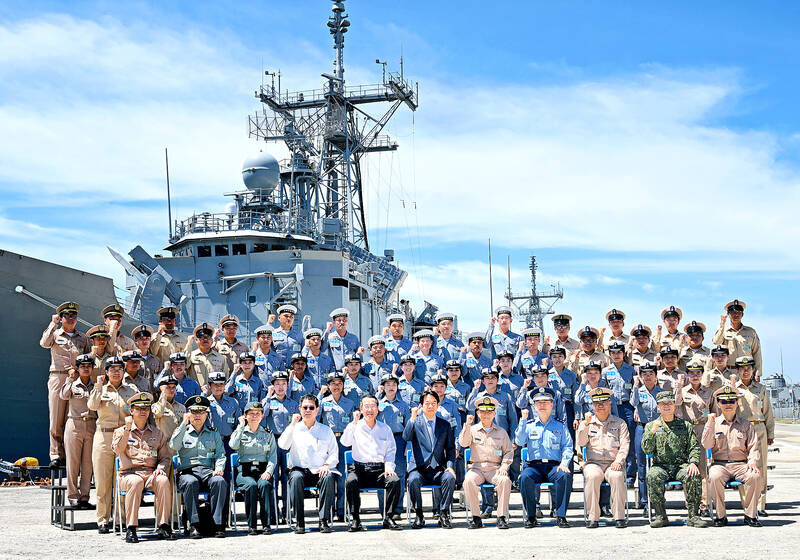
Photo: Fang Pin-chao, Taipei Times
The Cheng Ho — named after a Ming Dynasty Chinese admiral and explorer — is a Taiwan-built warship based on the design for the US Oliver Hazard Perry class of frigates.
A live RIM-66 Standard missile stood ready in its launcher at the ship’s bow as Lai spoke onboard.
Speaking to officers shortly afterward at a lunch at the base, Lai said the government was committed to further improving the weapons of the armed forces.
Penghu is also home to an important air base, from which Taiwanese air force jets regularly scramble to shadow Chinese military aircraft and warships operating around Taiwan.
Lai reviewed soldiers at an air defense facility near the air base, watching a drill with a fixed twin-mount Stinger surface-to-air missile, designed for close-in defense.
In related news, a successful subcontractor bid for a military base on Thursday laid the final piece of groundwork realizing the Ministry of National Defense’s plans for five missile bases forming a defensive perimeter extending 150km to the south, a ministry tender showed.
The project for the base in Taitung County’s Taiping Township (太平) was awarded to an undisclosed party, costing NT$1.57 billion (US$49.18 million), with construction having started last month and to continue through July 2027.
Bases are to be built in Tainan’s Sinjhong District (新中), the military port in Kaohsiung’s Zuoying District (左營), the eastern coast of Pingtung County, Pingtung County’s Pucian Township (埔墘), Taiping and Yunlin County’s Huwei Township (虎尾), a source said.
The source said the first base equipped with Harpoon missiles would be in Tainan and would likely complete construction by August 2027.
The source said all the bases are expected to be completed simultaneously and would be inspected concurrently in three years.
The navy’s 400 land-launched Harpoon missiles are expected to be delivered by 2028.
The missiles are to be placed under the jurisdiction of the littoral combat command, which would be officially established in 2026 alongside an arsenal of locally developed Hsiung Feng (“Brave Wind,” 雄風) missiles.
The source said that the Harpoon missiles purchased are the RGM-84L-4 Block II (U), the most up-to-date version, and have an effective range exceeding the 148km of the Hsiung Feng missiles.
The source said that the littoral combat command, with such an arsenal of missiles and the 25 radar trucks included in the missile package, would have greater capabilities to deter the Chinese People’s Liberation Army Navy.
The source said the radar trucks are compatible with the navy’s surveillance and reconnaissance system, adding that the network formed by the vehicles would have one node immediately take up the workload of another in case it is attacked or otherwise taken out of commission.
Additional reporting by Ben Blanchard
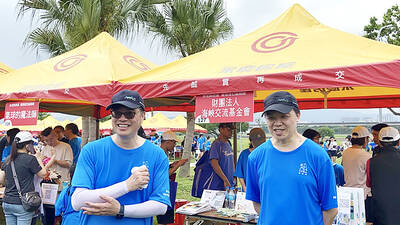
SECURITY: As China is ‘reshaping’ Hong Kong’s population, Taiwan must raise the eligibility threshold for applications from Hong Kongers, Chiu Chui-cheng said When Hong Kong and Macau citizens apply for residency in Taiwan, it would be under a new category that includes a “national security observation period,” Mainland Affairs Council (MAC) Minister Chiu Chui-cheng (邱垂正) said yesterday. President William Lai (賴清德) on March 13 announced 17 strategies to counter China’s aggression toward Taiwan, including incorporating national security considerations into the review process for residency applications from Hong Kong and Macau citizens. The situation in Hong Kong is constantly changing, Chiu said to media yesterday on the sidelines of the Taipei Technology Run hosted by the Taipei Neihu Technology Park Development Association. With
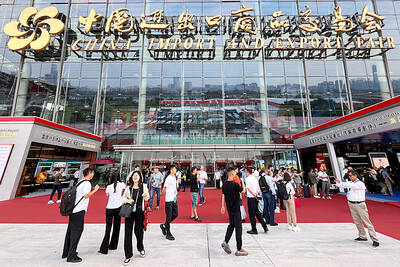
CARROT AND STICK: While unrelenting in its military threats, China attracted nearly 40,000 Taiwanese to over 400 business events last year Nearly 40,000 Taiwanese last year joined industry events in China, such as conferences and trade fairs, supported by the Chinese government, a study showed yesterday, as Beijing ramps up a charm offensive toward Taipei alongside military pressure. China has long taken a carrot-and-stick approach to Taiwan, threatening it with the prospect of military action while reaching out to those it believes are amenable to Beijing’s point of view. Taiwanese security officials are wary of what they see as Beijing’s influence campaigns to sway public opinion after Taipei and Beijing gradually resumed travel links halted by the COVID-19 pandemic, but the scale of
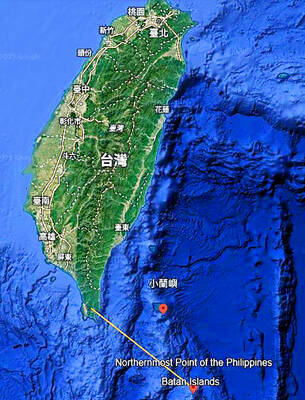
A US Marine Corps regiment equipped with Naval Strike Missiles (NSM) is set to participate in the upcoming Balikatan 25 exercise in the Luzon Strait, marking the system’s first-ever deployment in the Philippines. US and Philippine officials have separately confirmed that the Navy Marine Expeditionary Ship Interdiction System (NMESIS) — the mobile launch platform for the Naval Strike Missile — would take part in the joint exercise. The missiles are being deployed to “a strategic first island chain chokepoint” in the waters between Taiwan proper and the Philippines, US-based Naval News reported. “The Luzon Strait and Bashi Channel represent a critical access
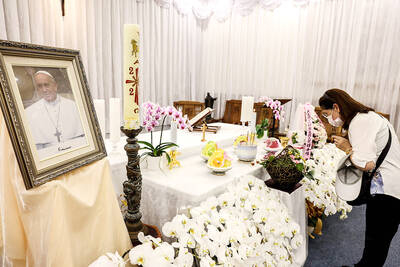
Pope Francis is be laid to rest on Saturday after lying in state for three days in St Peter’s Basilica, where the faithful are expected to flock to pay their respects to history’s first Latin American pontiff. The cardinals met yesterday in the Vatican’s synod hall to chart the next steps before a conclave begins to choose Francis’ successor, as condolences poured in from around the world. According to current norms, the conclave must begin between May 5 and 10. The cardinals set the funeral for Saturday at 10am in St Peter’s Square, to be celebrated by the dean of the College